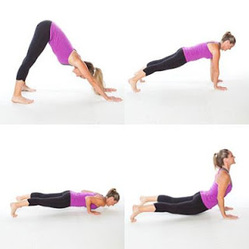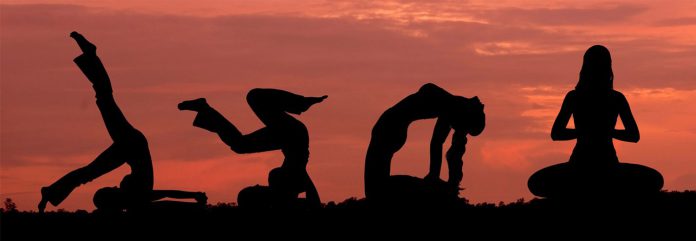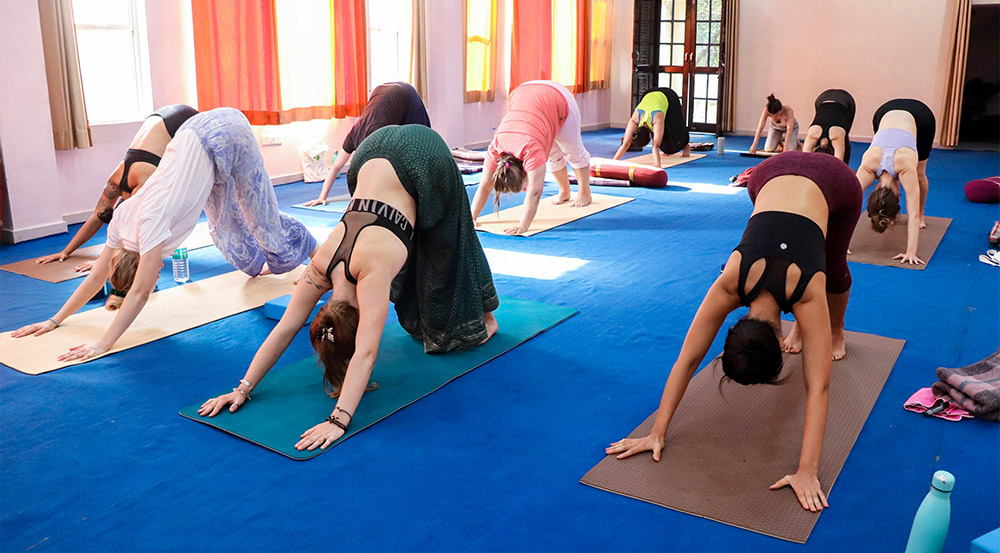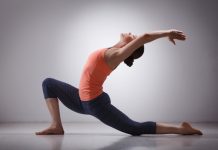What is Power Yoga?
Ashtanga, meaning ‘eight- limbs’ is a free-flowing system of yoga brought to the modern world by Sri K. Pattabhi Jois.
Procured from this style of basic yoga is a derivative popularly known as Power Yoga.
In layman terms, power yoga is a free flowing yoga where the yogis move quickly between poses, the specific poses mainly focussing on building strength rather than flexibility. It differs from Ashtanga yoga in the sense that Ashtanga yoga has a strict set of yoghs that the yogis follow, while power yoga is more flexible, and the routines vary from class to class.
Power yoga focuses more on the physical part of yoga, giving you a full body cardio type of work out.
Great for weight loss, and those who want to build up strength, Power yoga was invented by two American instructors and is a type of Baptized Ashtanga yoga, verbatim; done so to make the practice more flexible to the western yogis.
Is power yoga just another exercise routine?
Contrary to popular belief, power yogis are encouraged to rhythmically breathe during position transitions as in normal yoga, and also pay attention to the poses, postures and their body- that in itself making the yoga complete.
Important benefits of power yoga
- Power yoga is a low impact, yet rigorous aerobic yoga workout that helps promote mental and physical stability .
- It helps you strengthen your body and burn calories at the same time; power yoga being touted as more effective than the gym.
- It helps build muscle without lifting weights.
- It causes a rise in your energy levels and improvement in your overall health and strength.
- It increases flexibility, thereby easing joint pains, greatly helping for back pains and rheumatoid arthritis.
- Since most poses are meant to work against gravity, it increases bone density and strengthens your bones, thereby preventing disease such as osteoporosis.
- Power yoga increases your immunity and activates your lymphatic, aiding in easy elimination of toxins.
Power yoga for beginners
Before beginning yoga it is important to keep the following things in mind:
- Yoga should ideally be done 3-4 hour after meal and 1 to 2 hours before meals.
- It is recommended that beginners start with simpler forms of yoga like restorative or hatha yoga.
- Once the body is used to the twists and stretches, the yogi can transcend to power yoga easily.
- Power yoga is strenuous, and hence there are more chances of injury of done by self learning, especially repeatedly.
Hence learning from a teacher the first few days is recommended.
Power yoga basic workouts:
1. Suryanamaskar- Utkatasana
- Method: start with the basic Suryanamaskar, which works to warm up the body.
After that, ease down into the basic squat, and hold for 30seconds.
Do 10 rounds, taking a break every 3 rounds.
- Benefits: helps you tone your thighs.
2.Downward dog- plank- upward dog

- Method: Also known as the chaturanga vinyasa, start with a firm high plank.
Ease down half way, and hold.
Breathe in, and ease down to a low cobra pose or the upward dog, and then with your breathe, transcend into the downward facing dog.
- Benefits: core strengthening, and back and abdominal muscle strengthening.
3. Leg raise and abdominal churning.

- Method: lie down, with your back flat on the mat.
Raise your legs to 30° and hold.
Raise it further to 45° and hold.
Further, raise it to 90° and hold for a minute, and gently bring down your legs.
Breathe as usual during holds.
To take it up further, after raising the legs to 90°, take a full circle on the ceiling with your legs, clockwise and counter clockwise.
- Benefits: another core strengthening exercise, it helps decrease belly fat, and build abs.
After each work out, release gently into savasana.







